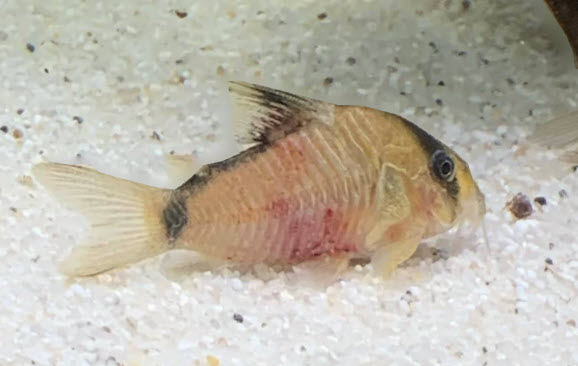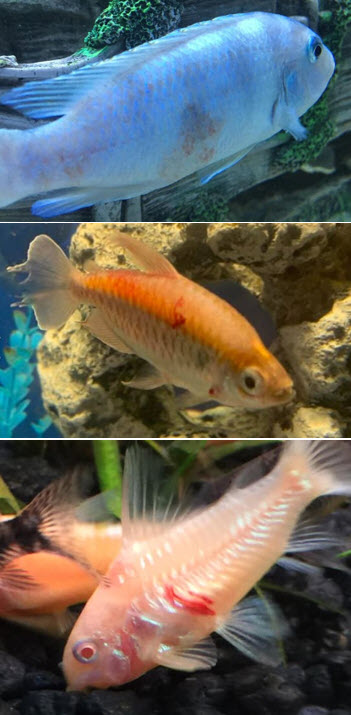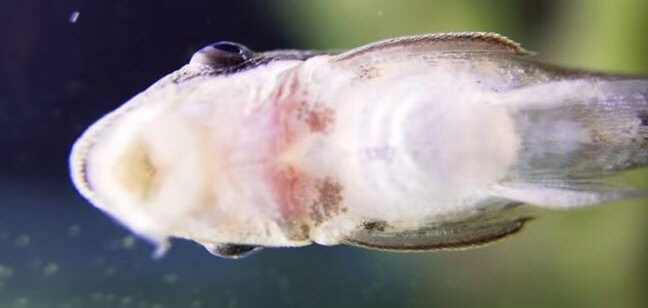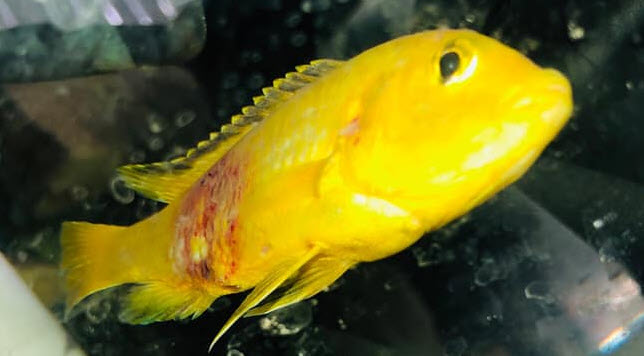
When a fish gets red skin blotches invariably everyone on social media will immediately comment that the fish has ammonia poisoning. They are generally wrong.
There are two distinct types of red blotches seen on fish:
- Blood red blotches. These are hemorrhagic septicemia caused by bacteria. These are what are seen in the home aquarium.
- Crimson red blotches, typically seen in fish which have been in their shipping bags for four or more days. This is carbon dioxide/ammonia poisoning, caused by carbon dioxide levels which have exceeded 30 ppm and/or ammonia exceeding 5 ppm.
These are the red blotches of septicemia

This is what one will see in late shipped bags of fish:

Most cases of hemorrhagic septicemia are gram negative infections and are best hit with a broad-spectrum antibiotic effective against gram negative bacteria. These need to be obtained from the internet. They include Thomas Labs Fish Mox, Midland Vet Service Aqua-Mox, VetDepot Amoxicillin, Fishbiotic Ampicillin, Mardel Maracyn 2, SeaChem KanaPlex, Thomas Labs Fish Min and Thomas Labs Fish Doxy. These medications are only available over the internet. Fish stores have all gone over to “natural” medications which have a very high profit margin and simply don’t work.

Bacterial infections are most effectively treated with antibiotics in the food. Many believe (and the instructions on the antibiotics say!) that antibiotics need to be added to the water. They are simply incorrect. This controversial topic is covered in the following link:
It is easy to make medicated food. Heat 1/4 cup water (two ounces or 58 milliliters, not a lot) in the microwave. Then blend one 1/4 ounce of plain animal derived gelatin (Knox gelatin, one envelope) into the hot water with vigorous stirring. Take two tablespoons of dry commercial fish food (pellets or flake) and mix it with just a little of the hot water/ gelatin mixture. Add hot water/gelatin until you get a paste like consistency. If it gets too watery just add more food.
Then add just a “smidgen” (roughly 1/16 teaspoon, a 1% to 2% addition) of medication to the mud. If you are using more than one medication mix the medications together, then use just a “smidgen” of the mixture. If you are using a packet of medication, take just a “smidgen” of the packet contents. Mix and mash the whole mass thoroughly. Spread it out into a pancake about 1/8th inch (3 mm) thick on a plastic film or a plate. Then put in the refrigerator. If you plan on keeping it for more than two weeks put it in a small plastic bag and freeze.
Feed this to the fish. These antibiotics are FDA approved for use in humans so they are extremely safe. Note that the exact amount of medication which goes into the food is not very important. Antibiotics can be overdosed pretty much with abandon as they are only toxic in large doses over a period of months.
If one is in Canada or Europe it becomes difficult to treat septicemia as aquarium antibiotics are not available. The best course in these countries is to grind up a human antibiotic pill and add it to the food. Just note human antibiotics are much stronger than the aquarium antibiotics so they only need a tiny “smidgen” of antibiotic being added to the food.
.
.
Aquarium Science Website
The chapters shown below or on the right side in maroon lead to close to 400 articles on all aspects of keeping a freshwater aquarium. These articles have NO links to profit making sites and are thus unbiased in their recommendations, unlike all the for-profit sites you will find with Google. Bookmark and browse!
.

